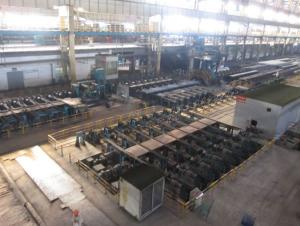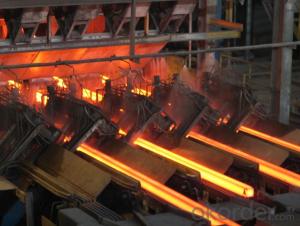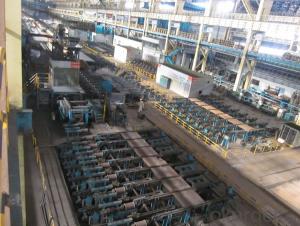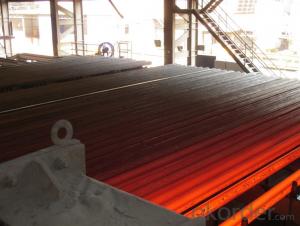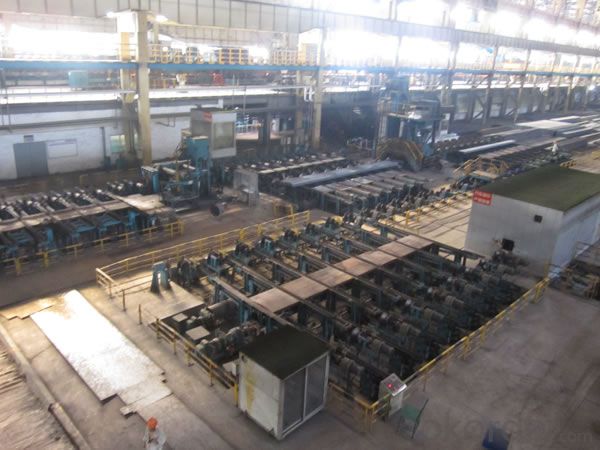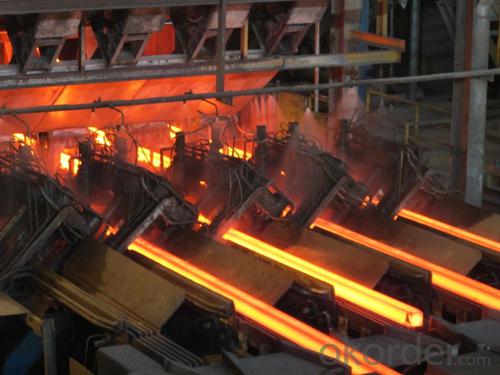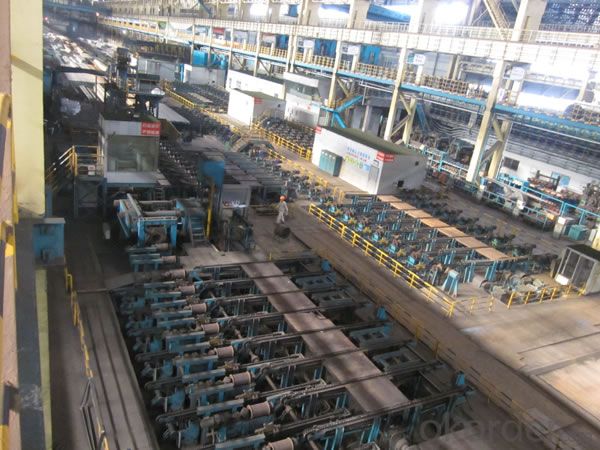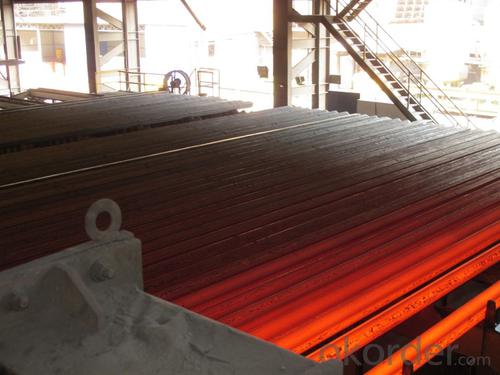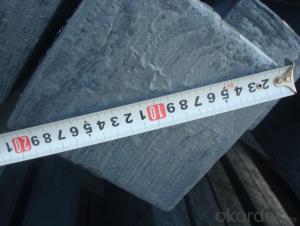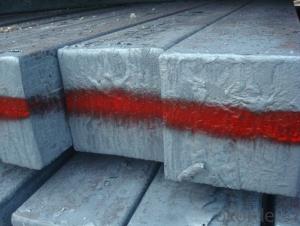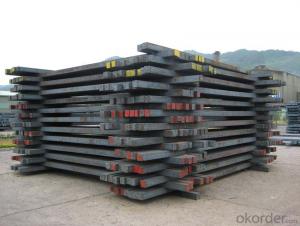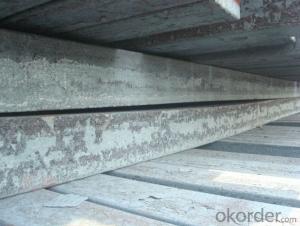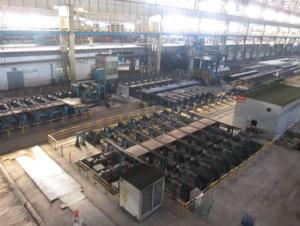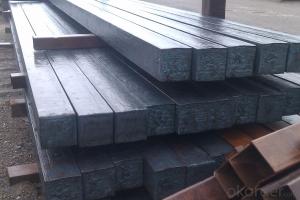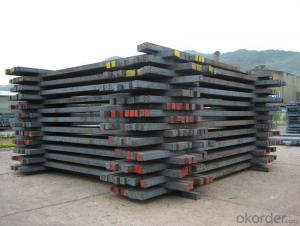Prime quality square alloy steel billet 90mm Q235
- Loading Port:
- Tianjin
- Payment Terms:
- TT OR LC
- Min Order Qty:
- 100 m.t.
- Supply Capability:
- 10000 m.t./month
OKorder Service Pledge
OKorder Financial Service
You Might Also Like
Structure of Prime quality square alloy steel billet 95mm Q235
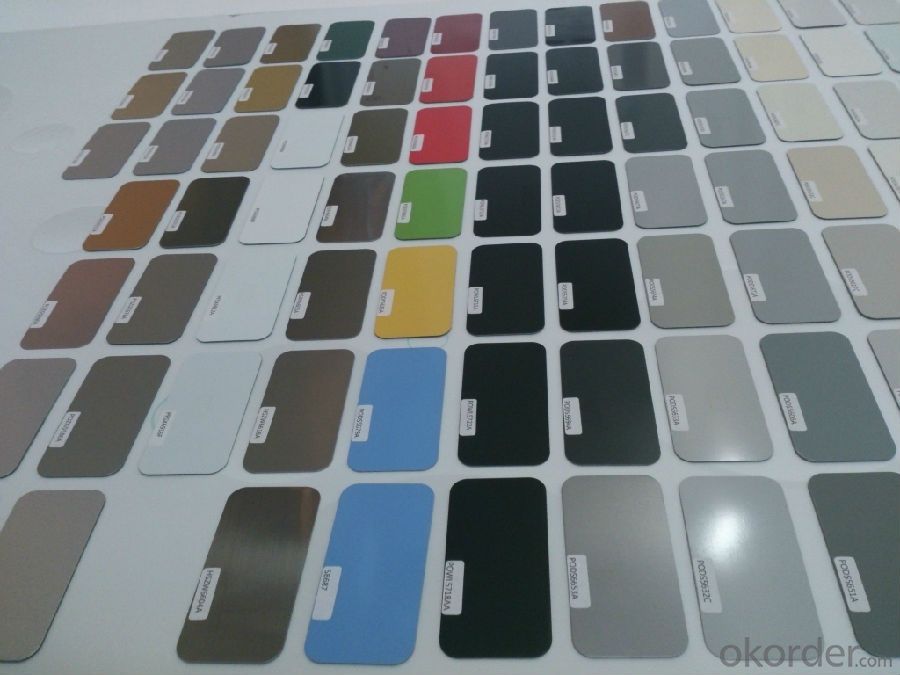
Description of Prime quality square alloy steel billet 95mm Q235
1. Prepainted steel coil is coated with organic layer, which provides higher anti-corrosion property and a longer lifespan than that of galvanized or galvalume steel sheets.
2. The base metals for prepainted steel coil consist of cold rolled, HDGI Steel, electro-galvanized and hot-dip alu-zinc coated steel. The finish coats of prepainted steel coil can be classified into groups as follows: polyester, silicon modified polyesters, polyvinylidene fluoride, high-durability polyester, etc.
3. The production process has evolved from one-coating-and-one-baking to double-coating-and-double-baking, and even three-coating-and-three-baking.
4. The color of the prepainted steel coil has a very wide selection, like orange, cream-colored, dark sky blue, sea blue, bright red, brick red, ivory white, porcelain blue, etc.
5. The prepainted steel coils can also be classified into groups by their surface textures, namely regular prepainted sheets, embossed sheets and printed sheets.
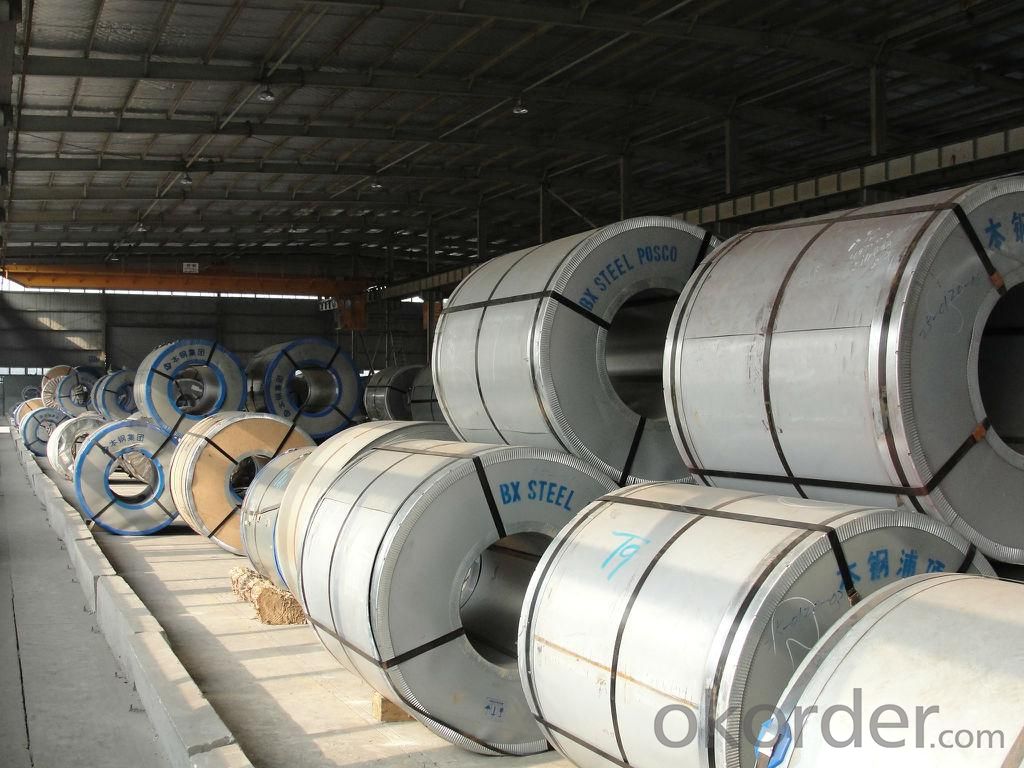
Main Feature of Prime quality square alloy steel billet 95mm Q235
Uncoated CR steel sheet
With the features of in line with the international highest standards in demension and shape, excellent surface finish and properties, the products are mainly used in home appliance and automobile industries.
Galvanized steel sheet(include HDG and EG)
With the features of good corrosion resistance, the products are mainly used in automobile, home appliance, electronics, building and machinery manufacture industries, etc.
Precoated steel sheet
With the features of enviromental protection and good processablility, long lasting surface durability, rich in colors, the products are maily used in building, home appliance and furniture industries, etc.
Applications of Prime quality square alloy steel billet 95mm Q235
Construction
Manufacture anticorrosion, industrial and civil architecture roof boarding, roof grille
Light industries
Home appliance's case, civil chimney, kitchen utensils
Auto industry
Corrosion resistant parts of cars
Agriculture
Food storage, meat and aquatic products' freezing and processing equipment
Commerce
Equipments to store and transport materials, and packing implements
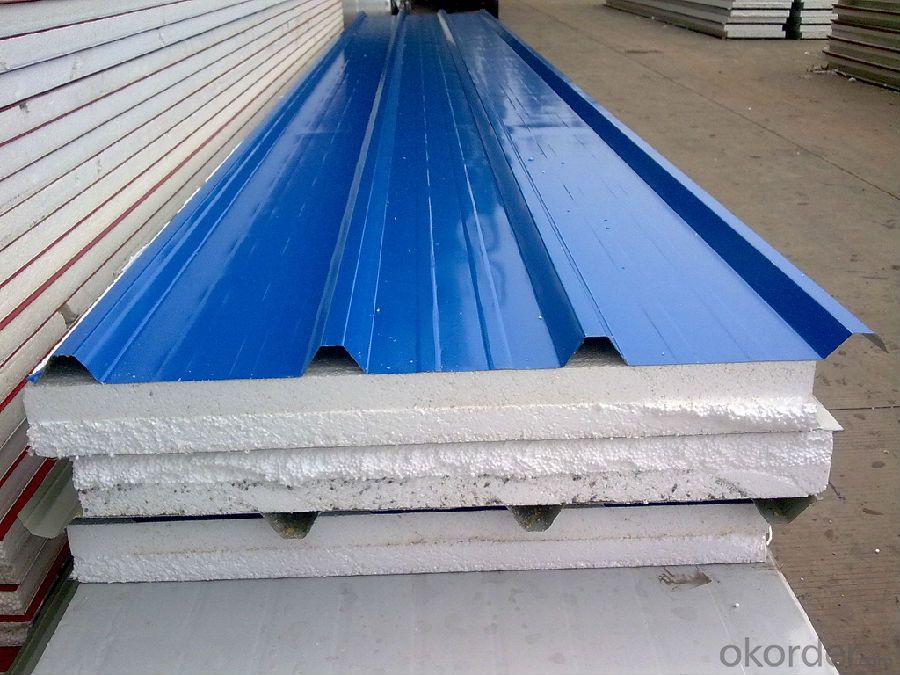
Specifications of Prime quality square alloy steel billet 95mm Q235
Product | Prime quality square alloy steel billet 95mm Q235 |
Material Grade | SGCC / SGCH / DX51D+AZ, etc |
Thickness | 0.6-3.0mm |
Width | 500-1500mm |
Tolerance | Thickness: +/-0.02mm , Width:+/-2mm |
Zinc-coating | Z30-150g/m2 |
Technique | Raw material: Hot rolled steel coil --> Cold rolled_>hot dipped galvalume |
Surface | Dried, Chromated, Unoiled |
Spangle | Regular spangle , small spangle, zero spangle |
ID | 508MM 610MM |
Coil weight | 1-25MT |
Export package | Cardboard inner sleeves, Waterproof paper, galvanized steel covered and steel strip packed |
FAQ of Prime quality square alloy steel billet 95mm Q235
We have organized several common questions for our clients,may help you sincerely:
1. How Can I Visit There?
Our company is located in Tianjin City, China, near Beijing. You can fly to Tianjin Airport Directly. All our clients, from home or aboard, are warmly welcome to visit us!
2. How Can I Get Some Sample?
We are honored to offer you sample.
3. Why choose CNBM?
Our delivery time about 15-20days for standard sizes, if you have other requirements like hardness, quanity and width ,it is about 20-40days. But don't worry we also try our best for the delivery time ,because time longer and our cost is higher.
- Q: For example, screw plate (PU plate and manganese plate), carbon steel Primeton is what person rolling out?.
- that in addition to the carbon and other elements, such as Cr, Mo etc., in which the carbon ratio below 30 for low alloy steel
- Q: What are the specifications for tool steel billets used in the automotive industry?
- The specifications for tool steel billets used in the automotive industry typically include requirements for hardness, toughness, wear resistance, and machinability. These billets are often required to meet specific international standards such as AISI (American Iron and Steel Institute) or DIN (Deutsches Institut für Normung) grades, which define the chemical composition and mechanical properties of the steel. Additionally, the billets may need to undergo specific heat treatment processes to further enhance their performance characteristics.
- Q: Are steel billets used in the production of household appliances?
- No, steel billets are typically not used in the production of household appliances.
- Q: How are steel billets used in the manufacturing of electrical components?
- The advantageous properties and suitability of steel billets make them commonly used in the manufacturing of electrical components. This process begins by producing steel billets, which are solid rectangular or square bars of steel formed through casting or hot rolling. When manufacturing electrical components, steel billets act as the raw material that undergoes various processes to become specific components. An example of this is the production of transformer cores, which are essential components in electrical transformers. Transformer cores made from steel billets offer high magnetic permeability, low hysteresis loss, and low electrical conductivity, making them perfect for magnetic induction applications. To manufacture transformer cores, the steel billets are heated and then shaped into thin laminations by passing them through a series of rolling mills. These laminations are stacked together and insulated with materials like varnish or paper, creating a core that efficiently transfers electrical energy between coils. Steel billets are also utilized in the production of electrical connectors, terminals, and busbars. These components require high strength, excellent electrical conductivity, and resistance to corrosion. Steel billets can be further processed using methods like forging, machining, or extrusion to create these components. Apart from transformers and electrical connectors, steel billets can be employed in manufacturing other electrical components such as motor cores, switchgear panels, and circuit breaker parts. The versatility of steel billets allows for the production of components with various shapes and sizes, catering to the specific requirements of the electrical industry. In conclusion, steel billets play a crucial role in the manufacturing of electrical components by providing a strong, durable, and cost-effective raw material that can be shaped and processed to meet the diverse needs of the electrical industry.
- Q: What are the different types of steel billet defects?
- There are various types of steel billet defects, including surface defects like cracks, laps, and scars, as well as internal defects such as segregation, porosity, and inclusions.
- Q: How are steel billets used in the manufacturing of marine equipment?
- Due to their unique properties and versatility, steel billets are a necessary component in the production of marine equipment. These semi-finished steel products, which come in rectangular or square cross-sections, are vital in the manufacturing of various marine equipment, including ship hulls, propellers, offshore platforms, and marine engines. Ship hulls rely on steel billets for their construction. The strength and durability of steel make it an ideal material for withstanding the harsh marine environment, including corrosion, extreme temperatures, and pressure. These billets are forged and shaped into plates, sections, and profiles, which are then welded together to form the hull structure. By using steel billets, ships are made robust, capable of carrying heavy loads, and resistant to the corrosive effects of seawater. Moreover, propellers, which are critical components of marine equipment, are manufactured using steel billets. Propellers are responsible for generating thrust and enabling the movement of ships and boats through the water. Steel billets are forged and machined to create the propeller blades, ensuring they possess the necessary strength, hardness, and hydrodynamic properties required for efficient propulsion. Additionally, steel billets are essential in the construction of offshore platforms used in oil and gas exploration and production. These platforms, whether fixed or floating, require a strong and stable structure to withstand the harsh marine conditions. Steel billets are used to fabricate the columns, braces, and beams that provide the necessary strength and stability to these platforms. The high load-bearing capacity and corrosion resistance of steel make it an ideal choice for such applications. Lastly, steel billets are employed in the manufacturing of marine engines, which power various vessels. These billets are forged and machined to create engine components such as crankshafts, connecting rods, and cylinder blocks. Steel's excellent mechanical properties, including high tensile strength, toughness, and wear resistance, ensure that marine engines can operate reliably and efficiently under demanding conditions. In conclusion, the use of steel billets is essential in the production of marine equipment. They provide the strength, durability, and corrosion resistance required to withstand the harsh marine environment. Whether it is ship hulls, propellers, offshore platforms, or marine engines, steel billets play a crucial role in ensuring the safety, performance, and longevity of marine equipment.
- Q: How are steel billets stored and transported?
- Steel billets are typically stored outdoors in large yards or warehouses, where they are organized in stacks or rows. To protect them from corrosion, billets are often covered with tarpaulins or anti-rust coatings. When it comes to transportation, steel billets are usually moved using heavy machinery like cranes or forklifts. They are loaded onto trucks, railcars, or ships, depending on the distance to be traveled. To ensure safety during transport, billets are secured with chains, straps, or other fastening methods to prevent shifting or falling.
- Q: How are steel billets used in the production of pipe fittings?
- Steel billets are an important raw material used in the production of pipe fittings. Pipe fittings are essential components that are used to connect, control, and redirect the flow of fluids within a piping system. To manufacture pipe fittings, steel billets are first heated to a specific temperature to make them malleable and easier to work with. They are then passed through a series of processes such as hot rolling, forging, or extrusion, depending on the desired shape and size of the pipe fitting. During the hot rolling process, the steel billet is passed through a set of rollers that exert pressure and shape it into a cylindrical form. This cylindrical shape is ideal for producing pipe fittings like elbows, tees, reducers, and couplings. In the forging process, the steel billet is subjected to extreme heat and pressure, allowing it to be shaped into various complex and customized designs. This method is often used to produce high-pressure pipe fittings that require exceptional strength and durability. Extrusion is another method used in the production of pipe fittings. Here, the steel billet is forced through a die with the desired cross-sectional shape, creating pipe fittings with a consistent outer and inner diameter. Once the desired shape is achieved, the pipe fittings are further processed through cutting, threading, or welding to create the final product. These additional steps ensure that the fittings are ready to be installed and securely connected to the piping system. In summary, steel billets play a crucial role in the production of pipe fittings by serving as the primary raw material. They are transformed through processes like hot rolling, forging, or extrusion to create a wide range of pipe fittings used in various industries and applications.
- Q: What are the different types of steel billet heat treatment processes?
- There are several types of steel billet heat treatment processes, including annealing, normalizing, quenching, and tempering. Annealing involves heating the billet to a high temperature and then slowly cooling it to relieve internal stresses and improve its ductility. Normalizing is similar to annealing but involves cooling the billet in still air to achieve a more uniform grain structure. Quenching is a rapid cooling process that involves immersing the billet in a quenching medium, such as water or oil, to achieve high hardness and strength. Tempering follows quenching and involves reheating the billet to a lower temperature to reduce brittleness and enhance toughness.
- Q: How do steel billets contribute to the manufacturing of electrical appliances?
- Steel billets are used in the manufacturing of electrical appliances as they serve as a raw material for various components. These billets are transformed into sheets, wires, or rods which are then used to create the outer casings, frames, or conductive elements of the appliances. The strength and durability of steel make it an ideal choice for ensuring the longevity and safety of electrical appliances.
Send your message to us
Prime quality square alloy steel billet 90mm Q235
- Loading Port:
- Tianjin
- Payment Terms:
- TT OR LC
- Min Order Qty:
- 100 m.t.
- Supply Capability:
- 10000 m.t./month
OKorder Service Pledge
OKorder Financial Service
Similar products
Hot products
Hot Searches
Related keywords
